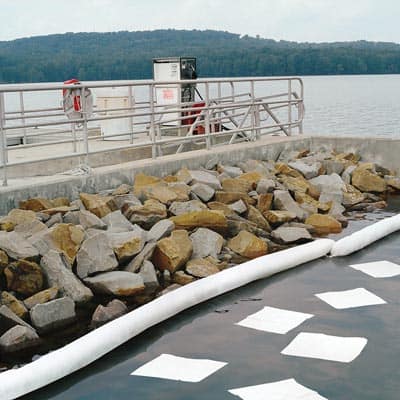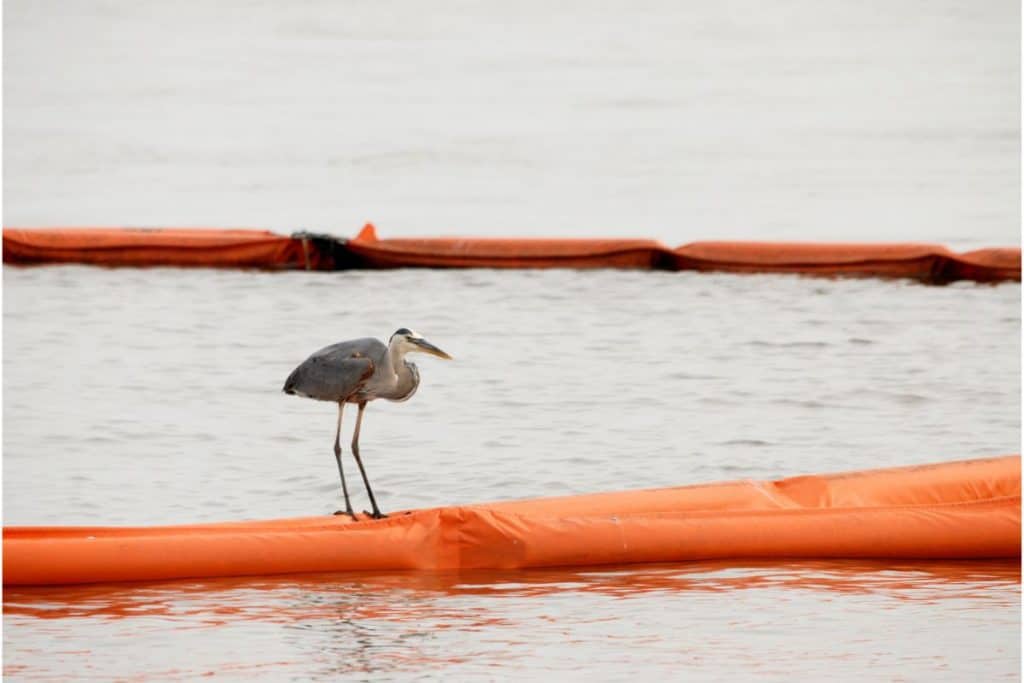Deploying oil absorbent booms in fast-current areas can be a challenging task, but it is crucial for effective oil spill response. In the event of an oil spill, swift action is necessary to minimize environmental damage and contain the spread of oil. This step-by-step guide will walk you through the process of deploying oil absorbent booms in areas with strong currents, ensuring a successful emergency spill response.
Understanding Oil Absorbent Booms
Oil absorbent booms are long, cylindrical barriers designed to contain and absorb oil on the water’s surface. They are made from materials that attract and hold oil while repelling water, making them an essential tool in oil spill response efforts. These booms are particularly useful in fast-current areas where oil can spread quickly if not contained.
Types of Oil Absorbent Booms
There are various types of oil absorbent booms available, each designed for specific conditions and types of oil spills. Understanding the differences will help you choose the right boom for your needs:
- Sorbent Booms: These are filled with absorbent materials like polypropylene, which soak up oil while repelling water. They are effective for containing and absorbing oil in calm and fast-moving waters.
- Inflatable Booms: These booms can be inflated on-site, making them easy to transport and deploy. They are ideal for large spills and can be used in various water conditions.
- Fence Booms: Made with a solid flotation device, fence booms are suitable for calm to moderate water conditions. They are not recommended for fast currents due to their rigid structure.

Preparing for Deployment
Before deploying oil absorbent booms, it is essential to prepare adequately to ensure a smooth and efficient operation.
Assessing the Spill Site
Begin by assessing the spill site to determine the extent of the spill and the speed of the current. This information will help you plan the deployment and choose the appropriate equipment. Consider the following factors:
- Current Speed: Measure the speed of the current to determine the best deployment strategy. Fast currents may require more robust booms or additional anchoring.
- Weather Conditions: Take note of the weather conditions, as wind and waves can affect the deployment and effectiveness of the booms.
- Spill Size and Type: Understand the size and type of oil spill to select the appropriate type and quantity of booms.
Gathering Necessary Equipment
Ensure you have all the necessary equipment for the deployment. This includes:
- Oil absorbent booms
- Anchors and weights
- Deployment boats
- Personal protective equipment (PPE) for the team
- Communication devices
Step-by-Step Deployment Process
Step 1: Develop a Deployment Plan
Create a detailed deployment plan based on the site assessment. The plan should outline the deployment strategy, including the placement of booms, anchoring points, and the roles of each team member.
Step 2: Mobilize the Response Team
Gather your response team and provide a briefing on the deployment plan. Ensure everyone understands their roles and responsibilities and is equipped with the necessary PPE.
Step 3: Deploy the Booms
- Position the Boats: Use deployment boats to transport the booms to the spill site. Position the boats upstream of the spill to allow the current to assist in the deployment.
- Deploy the Booms: Begin deploying the booms by unrolling them from the boats. Ensure the booms are placed in a U-shape or J-shape configuration to effectively contain the oil.
- Anchor the Booms: Secure the booms with anchors or weights to prevent them from being swept away by the current. Place anchors at strategic points along the boom line to maintain its position.
Step 4: Monitor and Adjust
Once the booms are in place, monitor their effectiveness and make any necessary adjustments. This may involve repositioning anchors or adding additional booms to improve containment.
Step 5: Maintain Communication
Maintain clear communication with your team throughout the deployment process. Use communication devices to coordinate movements and address any issues that arise.

Challenges and Solutions
Deploying oil absorbent booms in fast-current areas can present several challenges. Here are some common issues and their solutions:
- Booms Being Swept Away: Use heavier anchors or additional weights to secure the booms in place.
- Oil Escaping Containment: Add more booms or adjust the configuration to improve containment.
- Adverse Weather Conditions: Monitor weather forecasts and adjust the deployment plan accordingly. Consider delaying deployment if conditions are too severe.
Post-Deployment Actions
Once the oil absorbent booms have been deployed and the spill is contained, it is essential to conduct post-deployment actions to ensure the spill response’s success.
Recovery and Disposal
Recover the absorbed oil from the booms and dispose of it according to environmental regulations. Proper disposal is crucial to prevent secondary contamination.
Review and Improve
Conduct a review of the deployment process to identify areas for improvement. This can help enhance future oil spill response efforts.
Conclusion
Deploying oil absorbent booms in fast-current areas requires careful planning, teamwork, and adaptability. By following this step-by-step guide, you can effectively contain oil spills and minimize environmental impact. Always be prepared to adjust your strategy based on site conditions and continuously improve your response techniques for future incidents.
Take Action: Shop at Absorbents Online for Spill Containment Solutions
Don’t wait for an emergency to prepare! Visit Absorbents Online today to find a wide range of oil absorbent booms and other spill containment products. Equip your team with the best tools to ensure effective response in fast-current areas. Click https://www.absorbentsonline.com to shop now and safeguard our environment!